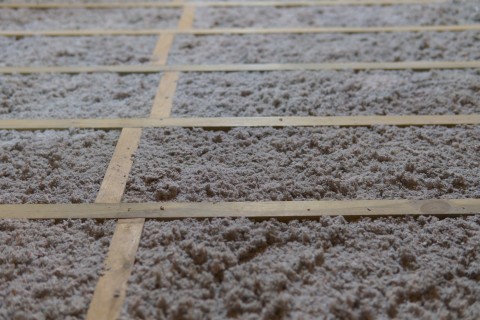

Choosing Insulation that is Safer for your Health
Insulation is a critical component of making an energy efficient building; we expect insulation to keep buildings comfortable, help save money and energy, and keep noise levels down. However, there are many chemicals of concern lurking within various insulation types. The concern comes from the chemicals used to bind, formulate or even make insulation “safer” through fire resistance. Because insulation is often used inside the air barrier, the chemicals that are put into insulation can offgas into buildings’ dwelling spaces. Flame retardants also make their way into household dust: Over 90% of dust samples in this study contained hazardous flame retardants.
Flame Retardants in Insulation
Foam insulations are attractive to builders because of their high R-value, but that high efficiency comes at a cost. Foam insulations are manufactured with the addition of chemicals such as halogenated and organophosphate flame retardants whose health impacts include endocrine disruption, reproductive toxicity, cancer, and adverse effects of fetal development. Some types of flame retardants, like HBCD, have been banned in Europe and the U.S. and are now taken out of use, though we are still being exposed due to its persistence in the environment. A new flame retardant called PolyFR has replaced the use of HBCD, but its health effects are not yet well understood, and it may be toxic when broken down into smaller halogenated byproducts. Boric acid is another flame retardant that is commonly added to natural derived products such as wool, cotton, and cellulose insulation. While boric acid is considered less toxic than other flame retardants, there is evidence that it can cause endocrine disruption, adverse effects on the development of a fetus, and reproductive harm.
Information in this section draws from and adapts the work of Habitable. Visit Habitable’s Informed website for the most updated guidance.
| Type of Insulation | Chemicals of Concern | Health Concerns | Guidance |
|---|---|---|---|
| Fiberglass | May contain a small quantity of carcinogenic dedusting oils. Respirable fibers are a health concern as well. | Cancer | Prefer blown-in fiberglass, formaldehyde-free, and Greenguard Gold certified. Apply source controls when installing fiberglass to reduce exposure to fibers. |
| Mineral wool | Formaldehyde | Cancer; gene damage; sensitizes the skin | Select GREENGUARD Gold or formaldehyde-free mineral wool |
| Cellulose | Boric acid | Endocrine disruption; birth defects; reproductive harm | Prefer ammonium sulfate as the flame retardant |
| Halogen-free Polyisocyanurate | Isocyanates (used in manufacturing and not installation) | Asthma | Use halogen-free polyiso instead of conventional polyiso |
| Natural wool | Boric acid | Endocrine disruption; birth defects; reproductive harm | Prefer products that use the flame retardant ammonium sulfate |
| Cotton | Boric acid | Endocrine disruption; birth defects; reproductive harm | Prefer products that use the flame retardant ammonium sulfate |
| EPS | Styrene, PolyFR | Cancer; endocrine disruption; gene damage; | Only use for below grade applications |
| XPS | Styrene, PolyFR | Cancer; endocrine disruption; gene damage | Only use for below grade applications |
| Polyisocyanurate | TCPP | Reproductive and developmental toxicity | Opt for halogen-free polyiso |
| SPF | Isocyanates, TCPP, Ethanolamine, Polyethylene glycol nonylphenyl ether | Asthma; Reproductive and developmental toxicity; endocrine disruption | Use in limited circumstances where SPF is the only viable option, such as uneven interior foundation walls. Avoid as possible in all interior uses. |
Healthier Insulation
Look for these labels:
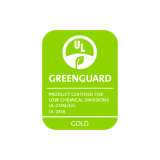
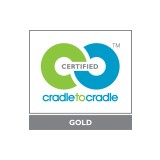
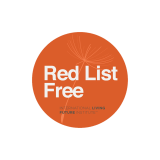
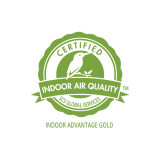
Board Insulation
| Avoid (High Risk) | Good | Better | Best |
|---|---|---|---|
| Foam products within the air barrier- walls, floors, and ceilings | Foam board in exterior grade applications only
Halogenated-free polyisocyanurate | Unfaced fiberglass boards (formadehyde-free) Mineral wool board (Formaldehyde-free and Greenguard Gold)
| Cellular glass Expanded cork board (foreign product) Wood fiber board Use mechanical fasteners instead of adhesives
|
Batt and Fill Insulation
| Avoid (High Risk) | Good | Better | Best |
|---|---|---|---|
| Foam products within the air barrier- walls, floors, and ceilings | *Cellulose *Cotton (recycled denim) *Kraft-faced fiberglass batts
| Sheep’s wool blown and batts *Hemp-fiber batts *Wood fiber batts and boards Mineral Wool (Formaldehyde-free or Greenguard Gold certified ) Unfaced fiberglass batts
| Fiberglass- Formaldehyde-free or Greenguard Gold Hemp-lime (hempcrete) cast in place or preformed blocks Wood fiber (loose fill and dense pack) Cork (foreign product)
|
*These products typically contain boric acid flame retardant
Biogenic Insulation Alternatives
Biogenic or biobased insulation materials can be the better alternative in terms of both life cycle assessments and healthier choices compared to some third party certified products, and non-third party certified products. Many of these forms of insulation are niche and/or emerging technologies, but whose applications are gaining popularity due to their being a healthier choice, as well as their sustainability, effective acoustic insulation properties, and many other benefits.
Straw Fiber Insulation
Straw fiber insulation can be used as insulation in three ways: as bales (load-bearing and non-loadbearing walls), as structural insulated panels (SIPs), and as a mixture of clay and straw that is packed and dried in the wall cavity. Walls are then sealed and coated, either through a clay plaster mix or enclosed in air sealing/waterproofing membranes. Straw insulated walls have natural fire resistance when very densely packed, and contain no added flame retardants.
Cork Insulation
Cork insulation is an eco-friendly choice because it’s a renewable and recyclable resource. Cork insulation is also a great thermal insulator, and is moisture and fire resistant. Cork is an imported product, as cork trees are grown only in Southwest Europe and Northwest Africa.
Wood Fiber Insulation
Since wood is a renewable resource, and a naturally occurring carbon sink, it makes for a safe, healthier and simultaneously high performing alternative to synthetic alternatives. Wood fiber insulation has a high capacity for absorbing and releasing moisture which makes for good thermal insulating. Wood fiber is manufactured as rigid boards, batts, and fill for loose-fill and dense-pack applications.
Hemp-lime (hempcrete)
Hemp-lime is a light-weight insulation composed of a mixture of industrial hemp’s woody core and fibers, a hydrated lime-based binder, and water. Hemp-lime can be spray-applied, cast-in-place, or assembled as pre-cast blocks. It has an R-value ranging from 2-3.5 per wall inch, has natural resistance to pests, fire, and mold, and regulates humidity.
Hemp Fiber Insulation
Hemp fiber is composed of roughly 90% hemp fiber and 10% polyester binder. Hemp fiber typically has added boric acid, which is a flame retardant with some known health risks.
Learn more about biogenic insulation materials:
Transformative Materials - Carbon Leadership Forum
Parsons Healthy Materials Lab: Material Collections